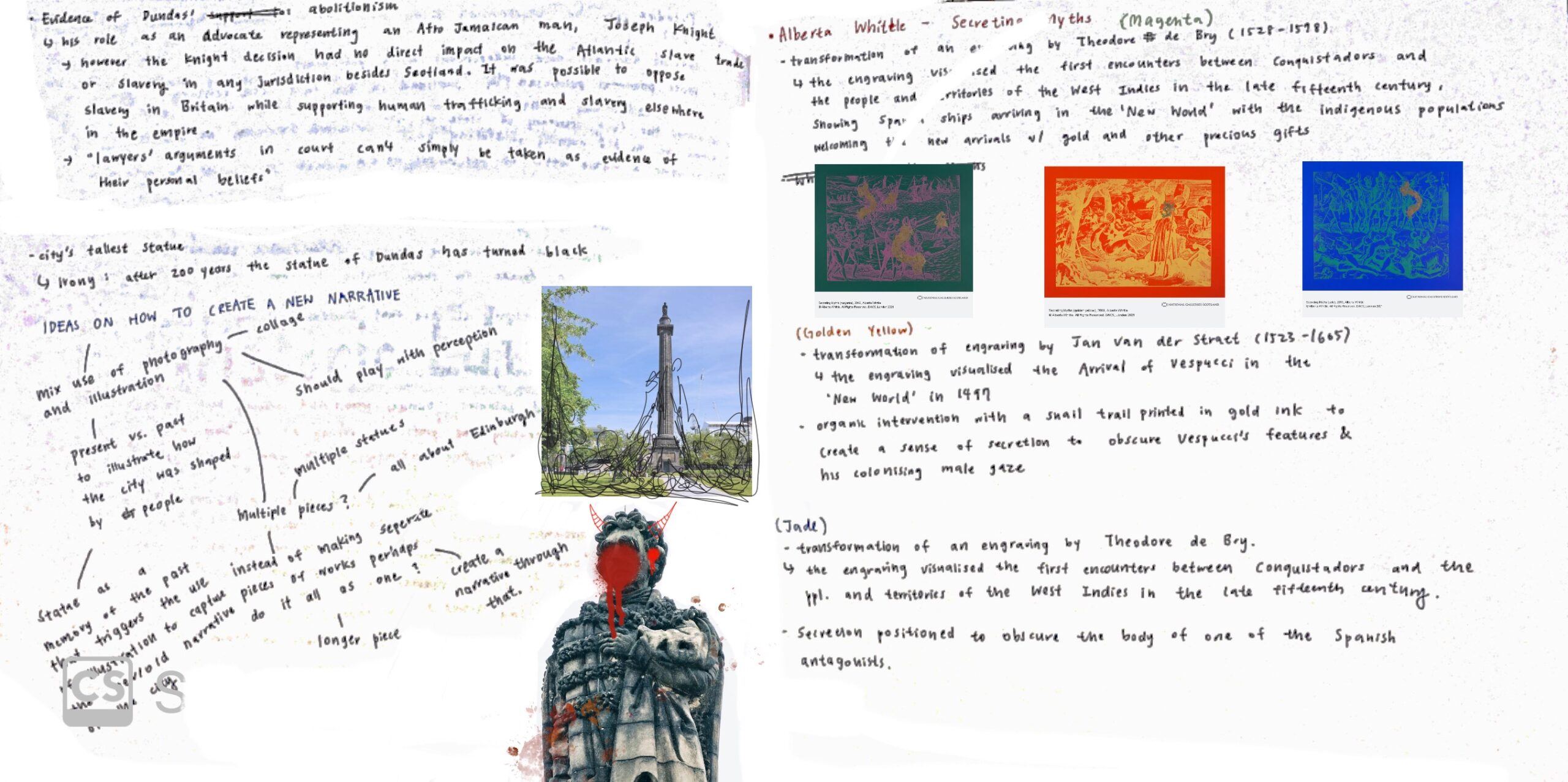
I was given some useful feedbacks from the last tutorial. I decided to take the ideas I have for Marie Antionette as a starting point of idea development and began to focus more on historical people in Edinburgh. Cities were shaped by people, histories were also written by people, by investigating the underlying narrative behind those people, alongside with the idea that history was written and shaped through a particular framework, I wish to break and make new narratives within the present-day city scene.
There was a lot of controversy recently towards Henry Dundas, a Scottish advocate and independent wing politician and the most powerful politician in Scotland in the late 18th century. People are debating whether or not the statue of Henry Dundas should be taken down by the council due to his involvement in delaying the abolition of transatlantic slave trade. I went to research more about both the great and bad things he did. Despite his glorification of slavery, he was instrumental in the encouragement of the Scottish Enlightenment, in the prosecution of the war against France, and in the expansion of British’s influence in India. However, are these accomplishment enough to cloud the amount of people he had influenced? Some of Dundas’ descendants claimed that he actually opposed the slave trade. Where does the truth lie?

I wish to address those conflicting statements in the final piece for this project. Perhaps draw upon photographies to illustrate and generate conversations between the present and past, creating a new narrative of the city scene.






